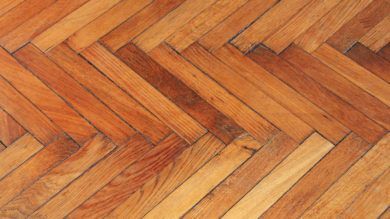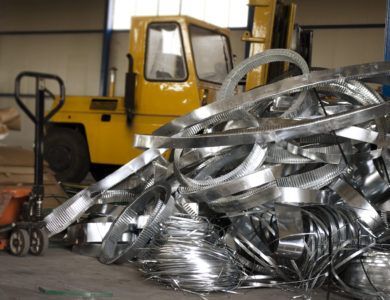Construction and demolition, or C&D materials, are the various waste streams (e.g., wood, metals, concrete, asphalt, gypsum) generated from the construction, renovation, and demolition of roads, buildings, and bridges. In the United States alone more than 500 million tons of C&D materials are generated annually. Because so much C&D waste is produced, it is imperative that recycling processes and repurposing methods are developed to reduce the amount of debris that ends up in landfills.
C&D waste can include a wide variety of materials, and so there are many methods used for C&D recycling and various markets that can make use of these recycled products. However, most C&D recycling processes begin the same way: waste is separated by product type. In some cases, prior to separation, the waste may be crushed or ground to improve the ease of separation.
These initial recycling steps can either be done at the work site or a resource recovery facility. It is important to note that the purity of the recovered materials determines the resale price—with purer products, not surprisingly, fetching a higher price. Thus, material crushing, while simplifying the separation process, may create a more contaminated (less valuable) recycled material.
This article details some of the unique ways recycled C&D refuse can be repurposed.
Concrete and Brick
Concrete and brick from building demolition can be crushed and used as the base course layer in road construction. The base course layer of a road improves water drainage, stability, and abrasion resistance.
Wood
Wood-framed buildings with heavy wood timber (e.g., fir, chestnut, & pine) can often be deconstructed in such a way that the wood beams can be resold and repurposed as flooring, molding, doors, or other wooden fixtures such as decorative elements.
Wood chips, on the other hand, can be dyed and used as decorative mulch or used as a bulking agent in biosolid composting or animal bedding.
Asphalt and Asphalt Shingles
Asphalt pavement can be recycled into hot mix asphalt for road construction and maintenance. Using reclaimed asphalt benefits the environment by reducing the amount of asphalt waste and reduces the cost of raw materials.
Like concrete and brick, asphalt shingles can be ground and repurposed as base course layer in road construction. If the shingles are ground to a finer grade, however, they can be used in the mix for the top layer of paving to reduce paving costs. Learn more on asphalt shingle recycling here!
Metals
Scrap metals from construction and demolition projects, such as aluminum, copper, and steel, can be melted down and recycled for many industrial (e.g., plumbing, machinery) and residential (e.g., fixtures, lighting) uses, as well as packaging materials (e.g., aluminum cans for foodstuffs).
Gypsum
Gypsum, a soft sulfate mineral found in drywall, can be recycled using a closed-loop recycling process. This means that, if handled properly, gypsum products can be recycled repeatedly to create the same or similar product with (theoretically) no waste. The gypsum recycling process involves separating the gypsum from other components and grinding it into a powder. Then, the gypsum powder can be formed into new gypsum products.
If you want to learn more about the potential uses for recycled building materials, reach out to the Construction and Demolition Recycling Association (CDRA). The CDRA advocates for the environmentally sound recycling of C&D materials which equates to 4,300 acres of landfill avoided by recycling approximately 583 million tons of C&D.
As proud and active members of the CDRA, General Kinematics is committed to the proper separation and recycling processes of many materials, including C&D. To learn more about our expert sorting recycling equipment and streamlined processes, contact us today!









